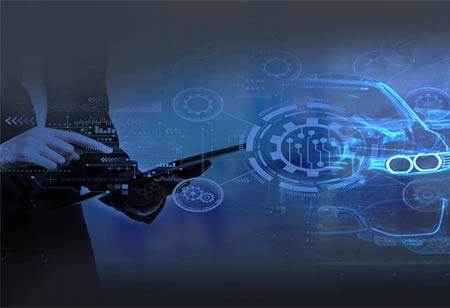THANK YOU FOR SUBSCRIBING
THANK YOU FOR SUBSCRIBING
Be first to read the latest tech news, Industry Leader's Insights, and CIO interviews of medium and large enterprises exclusively from Auto Tech Outlook

By
Auto Tech Outlook | Friday, August 15, 2025
Stay ahead of the industry with exclusive feature stories on the top companies, expert insights and the latest news delivered straight to your inbox. Subscribe today.
VR is transforming APAC's automotive industry by enhancing design, prototyping, and training. Through immersive simulations and global collaboration, it reduces costs, accelerates development, and improves safety.
FREMONT, CA: Virtual Reality (VR) is transforming various industries, and the automotive space is no exception. In the Asia-Pacific (APAC) region, the automotive industry embraces VR to redefine traditional design, prototyping, and training processes. With its immersive and interactive capabilities, VR has become an indispensable tool, driving innovation and efficiency.
VR remodels automotive design by enhancing conceptualization, prototyping, and training processes. Designers can translate ideas into 3D virtual models with incredible speed and accuracy, facilitating real-time collaboration across geographically dispersed teams. In the APAC region, countries like Japan and South Korea leverage VR to bridge communication gaps, ensuring seamless teamwork and informed decision-making. Additionally, VR allows for real-time design modifications, reducing reliance on physical prototypes in the early stages. This capability, widely adopted by automotive leaders in China and India, accelerates iteration cycles while aligning designs with brand vision and customer expectations.
Beyond design, VR transforms the prototyping phase by enabling virtual model testing, significantly reducing costs and development time. Traditional physical prototypes require substantial investment, but engineers can identify and rectify flaws in a risk-free digital environment with VR. APAC manufacturers are increasingly adopting virtual prototyping to maintain competitiveness in the global market. Moreover, VR-powered simulations facilitate comprehensive efficiency, safety, and aerodynamics testing, offering unparalleled precision. For instance, automotive firms in Thailand and Malaysia utilize VR to enhance vehicle safety standards and performance before production begins.
VR also plays a crucial role in training for employees and drivers. Automotive companies in Singapore and other APAC nations are integrating VR-based training to upskill workers efficiently. Through immersive simulations, assembly-line employees and engineers can gain hands-on experience in a controlled, risk-free setting. Additionally, VR is deployed for driver education, simulating real-world scenarios such as adverse weather conditions and emergency maneuvers. In countries like India and China, where road safety remains a critical concern, VR-driven driver training programs are gaining traction.
The benefits of VR in the automotive industry are substantial. It minimizes costs by reducing the need for physical prototypes and enables virtual testing, leading to significant resource savings. VR accelerates the design and prototyping, shortening time-to-market while ensuring enhanced safety through detailed simulations. Furthermore, it fosters seamless collaboration among global teams, allowing designers and engineers to work together efficiently regardless of location. As automotive companies continue to embrace VR, the industry is poised for more significant innovation, efficiency, and safety in vehicle development and training.
VR has emerged as a pivotal technology in the automotive industry, transforming how vehicles are designed, tested, and manufactured. As the APAC region continues to lead in adopting innovative technologies, VR is set to play an even more significant role in the automotive sector. By fostering creativity, efficiency, and safety, VR is shaping the cars of tomorrow and how they are designed and built today.
 Copyright © 2025 AutoTech Outlook. All Rights Reserved | Privacy Policy | Subscribe | Sitemap | About us | Feedback Policy | Editorial Policy
Copyright © 2025 AutoTech Outlook. All Rights Reserved | Privacy Policy | Subscribe | Sitemap | About us | Feedback Policy | Editorial Policy 



